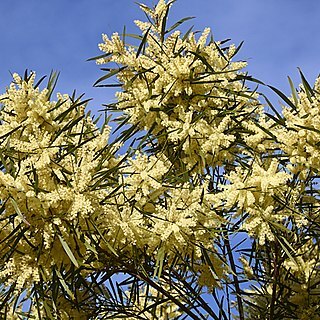Unarmed tree to c. 8 m high. Branchlets angular, with short white appressed hairs. Phyllodes straight, narrow-lanceolate, acute, 5-10 by (0.2-) 0.4-1 cm, 8—18(—35) times as long as wide, appressed puberulous, glabrescent; gland not prominent, 0.4-0.6 cm above the base of the phyllode or absent; 1-3 prominent longitudinal veins, 6-9 anastomosing secondary veins on each side of the midrib. Spikes sparsiflorous, ± sessile, to c. 8 cm, glabrous. Flowers yellow, tetramerous, bisexual. Calyx cupular, 0.2-0.5 mm, ± glabrous, lobes short, obtuse, ± ciliate. Corolla 1.4-2 mm. Ovary pubescent with long white hairs. Pod straight, linear, longitudinally wrinkled and somewhat moniliform, c. 13 by 0.3 cm. Seeds longitudinal, 4-5 by c. 1.5 mm; pleurogram large, open; funicle folded.


